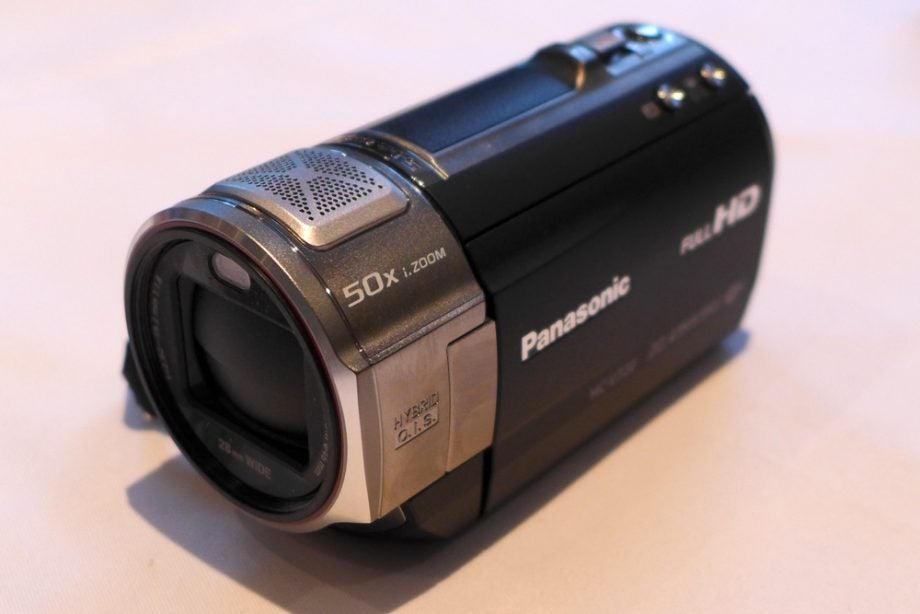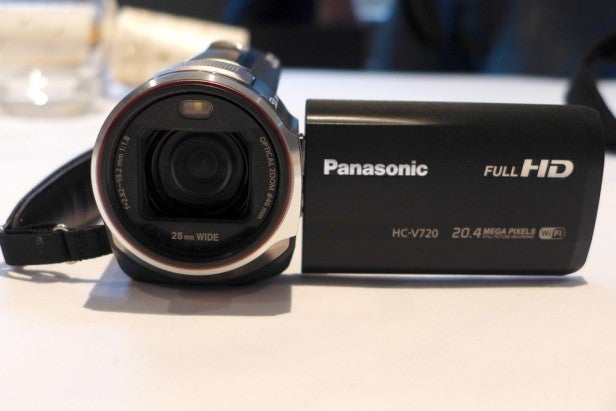Panasonic HC-V720 Review
Panasonic HC-V720
The HC-V720 brings WiFi and 5.1 surround to the middle of Panasonic's range.

Sections
- Page 1 Panasonic HC-V720 Review
- Page 2 WiFi features, Image Quality and Verdict Review
Verdict
Pros
- Good image quality
- Comprehensive manual controls
- 5.1 surround sound
Cons
- No headphone minijack
Key Specifications
- Review Price: £548.99
- 1/2.3in BSI CMOS with 17.52Mpixels
- 1080/50p AVCHD 2.0 format at up to 28Mbits/sec
- Manual focus, shutter, iris and white balance
- 5.1 surround sound
- WiFi capabilities
Panasonic’s new flagship consumer camcorder, the HC-X920 is more of a major upgrade than its subtle name change over its HC-X900 predecessor would imply. But the HC-V720 is a bit less of a leap from the HC-V700 it replaces. This is because its predecessor already had some of the features that have now made their way into the flagship model. There are still plenty of improvements, just not quite so many to the core specification as the top-end model.
In particular, the HC-V700 had already moved to a 1/2.3in CMOS, rather than the 1/4in unit in previous models, although it only sports one of them rather than three. There is still an improvement here, however. The CMOS now sports a gross 17.52Mpixels compared to 15.3Mpixels in the HC-V700, which allows it to offer a slightly greater effective 4.14Mpixels, up from 3.55Mpixels. This is available for still images as well as video, and allows the HC-V720 to grab 20.4Mpixel compared to 5.8Mpixels. You might have spotted that this is actually more pixels than the sensor has to offer, and five times the quoted effective quantity. So the top still image resolution will entail interpolation, and won’t have the same quality as the HC-X920 has to offer. Footage is recorded in AVCHD 2.0 format, so the top option is 28Mbits/sec Full HD with 50 progressive frames per second. In this mode, a 16GB card will be enough for around 75 minutes of footage. There’s also a 960 x 540 iFrame option that is recorded as standard MPEG-4. A single SDXC-compatible slot is provided.
Panasonic is still describing the sensor as a High Sensitivity MOS rather than Back-Side Illuminated CMOS, but minimum illumination has improved from 4 lux in Low Light scene mode to 3 lux. Optical zoom remains the same at a substantial 21x, but the extra sensor resolution has allowed the Intelligent Zoom to be increased slightly to 50x from 46x. As with the HC-X920, image stabilisation remains the same five-axis Hybrid OIS with a Lock option, but with a couple of extra features. Active Mode smoothes out shooting when walking, whilst the Level Shot function detects when you’re shooting at a slight angle, and corrects for it automatically.
Aside from the single CMOS rather than three, the other key area where the HC-V720 offers a reduced feature set over the flagship HC-X920 is the lack of the multi-purpose lens ring. So most functions must be accessed via the 3in touch-screen LCD. There are buttons for controlling Intelligent Autio (iA) mode and image stabilisation on the top. Behind the LCD is a further button to call up the WiFi functions, of which more later. But that’s it for discrete buttons. As with the HC-X920, the iA button now cycles through options, including iA , which adds a basic exposure and red-blue balance controls to otherwise automatic operation. You can also switch to a selection of creative effects, including a faux tilt-shift Miniature mode, 8mm Movie, Silent Movie, and Time Lapse. You get rapid access to scene modes, as well as the ability to switch to fully manual.


